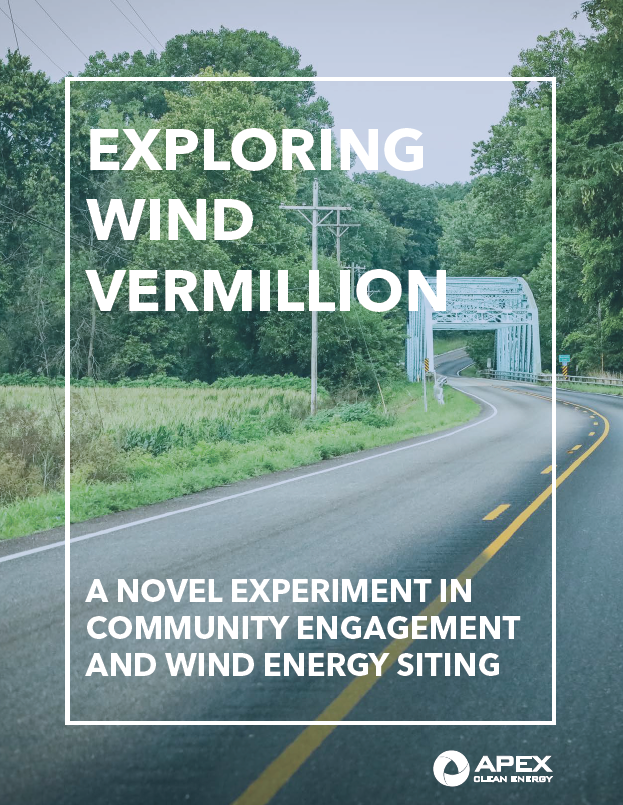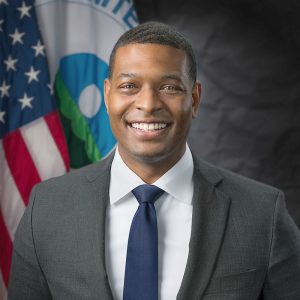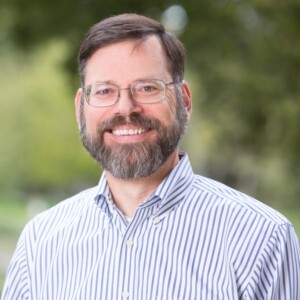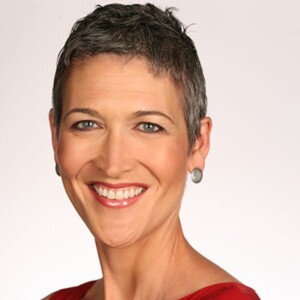Background
Spurred on by federal, regional, state, and local climate and energy goals and incentives, utilities and developers are looking to site clean energy projects all across the country. Despite the opportunity, as these projects proliferate, proponents are running into challenges with local concern, opposition, and/or regulation. In early 2020, Apex Clean Energy undertook a rare— and perhaps unique—experiment in collaborative decision-making, seeking a suitable community with which to engage to determine whether and how to site and build a wind energy project in that community. After being delayed by the arrival of the COVID-19 pandemic, Apex Clean Energy ultimately selected a community in which to attempt this approach: Vermillion County, Indiana. The full account of the project, approaches, collaborative engagement, challenges, and final takeaways are detailed in a report released in February 2023.
Engagement
Motivated and informed by previous community engagement experiences, Apex and Keystone Policy Center collaborated on a multimodal approach to community engagement over approximately one year. The approach involved independent research, outreach, and engagement from the facilitation team alongside work by Apex staff to develop relationships within the community. Community engagement opportunities took several forms so that residents could participate in the manner that worked best for them. Along the way, Apex and Keystone solicited candid input on a range of topics and questions; adapted to community responses and capacity to engage; and adjusted to the county political climate, respecting community leaders’ desire to convene town hall meetings and undertake an ordinance development process. Community engagement included the following approaches:
- Launching a website to provide a common space to share information about the proposed process; provide answers to questions frequently asked about wind energy; and aggregate all resources and opportunities for engagement with the community.
- Direct engagement with the community from Keystone Policy Center through stakeholder interviews, an online questionnaire, outreach to county commissioners, and visiting Vermillion County.
- Vermillion County residents were invited to participate in surveys on several topics that were intended to build on each other to increase awareness and understanding of wind energy in the community.
What Happened
Initial engagement indicated willingness among community members to engage in a process to explore wind energy in Vermillion County, though the process never succeeded in securing high levels of participation from community members. In addition, over the course of the engagement period, residents and local leaders appeared to grow fatigued with a duplicative and extensive engagement process being conducted in parallel by the Area Planning Commission (APC) regarding the county’s wind ordinance. Ultimately, the County Commission instituted a wind ordinance that eliminated the potential to site turbines in the county, precluding any possibility of Apex’s community exploration process to result in a viable wind project. After a brief effort to continue the process despite the new ordinance, the Apex and Keystone elected not to move forward with a more extensive community engagement process, due to an inability to generate meaningful and consistent participation from the public.
Lessons Learned
Keystone advocates for more inclusive, engaging, and meaningful processes through which affected stakeholders can learn, share, debate, and influence outcomes of projects and policies that affect them. The Vermillion County process put this advocacy to work on the ground in a robust way. But even the best of intentions and process design, a developer serious about changing business as usual, and a sincere intention to operationalize evidence-based best practices were not enough to result in a different outcome—an approved, tailored project with a satisfied community—than more traditional and contentious processes. But there are valuable takeaways from this project for future engagement:
- First, the entry point for innovative processes is critical. This report talks extensively about timing, sequencing, local sponsors, and the like. But the entry point—when, with whom, by whom—is essential to the trajectory of a project.
- Second, instigating collaboration takes more effort than achieving it. Because no one within the county was asking for an innovative siting process, let alone a wind project, the facilitation team could have shifted to a much more intensive engagement—been on the ground more, built more relationships, and worked harder to instigate and influence a good process.
- Finally, although not successful in this case, robust community engagement for successful project siting takes significant time and resources. Setting national and state goals is one thing, but permitting projects one by one on the ground is quite another.






